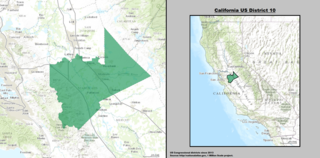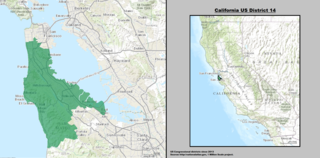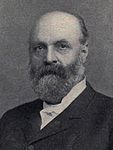
Cruz Miguel Bustamante is a retired American politician. He was the 45th Lieutenant Governor of California from 1999 to 2007, serving under governors Gray Davis and Arnold Schwarzenegger. A member of the Democratic Party, Bustamante previously served as speaker of the state Assembly from 1996 to 1998.

James Herbert Budd was an American lawyer and Democratic politician. Involved in federal and state politics, Budd was a member of the U.S. House of Representatives for the 2nd California district from 1883 to 1885, and served as the 19th Governor of California from 1895 until 1899.

The 2006 California gubernatorial election occurred on November 7, 2006. The primary elections took place on June 6, 2006. The incumbent Republican Governor, Arnold Schwarzenegger, won re-election for his first and only full term. His main opponent was California State Treasurer Phil Angelides, the California Democratic Party nominee. Peter Camejo was the California Green Party nominee, Janice Jordan was the Peace and Freedom Party nominee, Art Olivier was the California Libertarian Party nominee, and Edward C. Noonan was the California American Independent Party nominee.

California's 10th congressional district is a congressional district in the U.S. state of California. Currently, the 10th district encompasses an area of the northern San Joaquin Valley.

California's 11th congressional district is a congressional district in the U.S. state of California.

California's 6th congressional district is a congressional district in the U.S. state of California.

California's 18th congressional district is a congressional district located in the U.S. state of California.

California's 8th congressional district is a congressional district in the U.S. state of California.

California's 14th congressional district is a congressional district in the U.S. state of California.

California's 15th congressional district is a congressional district in the U.S. state of California that covers most of eastern Alameda County including Castro Valley, Dublin, Fremont, Hayward, Livermore, Pleasanton, Sunol, Union City, and parts of Contra Costa County, including San Ramon.

California's 22nd congressional district is a congressional district in the U.S. state of California. The district is currently represented by Republican Devin Nunes.

California's 24th congressional district is represented by Salud Carbajal. Following redistricting, the district contains all of Santa Barbara County and San Luis Obispo County as well as the Los Padres National Forest in Ventura County.

California's 31st congressional district is a congressional district in San Bernardino County, in the U.S. state of California. The district is located in the Inland Empire region, including the city of San Bernardino and portions of Rancho Cucamonga. The district is currently represented by Democrat Pete Aguilar, who was first elected in 2014.

California's 39th congressional district is a congressional district in the U.S. state of California. The district includes parts of Los Angeles, Orange and San Bernardino counties, and includes Fullerton, La Habra, La Habra Heights, Brea, Buena Park, Anaheim Hills, Placentia, Yorba Linda, Diamond Bar, Chino Hills, Hacienda Heights and Rowland Heights. It is currently represented by Democrat Gil Cisneros.

The 1974 California gubernatorial election took place on November 5, 1974. The primary elections occurred on June 4, 1974. Incumbent Governor and former actor Ronald Reagan was retiring after two terms. Democratic Secretary of State Jerry Brown, son of former Governor Pat Brown, defeated Republican Controller Houston I. Flournoy in the general election.

The 1894 South Carolina gubernatorial election was held on November 6, 1894 to select the governor of the state of South Carolina. John Gary Evans was nominated by the Democrats and became the 85th governor of South Carolina.

The 2010 California gubernatorial election was held November 2, 2010 to elect the Governor of California. The primary elections were held on June 8, 2010. Because constitutional office holders in California have been prohibited from serving more than two terms in the same office since 1990, incumbent Republican Arnold Schwarzenegger was ineligible to run for re-election for a third term. Former Governor Jerry Brown, to whom the term limits did not apply due to a grandfather clause, defeated Meg Whitman in the general election. Brown was sworn into office on January 3, 2011.

The United States House of Representatives elections in California, 1894 was an election for California's delegation to the United States House of Representatives, which occurred as part of the general election of the House of Representatives on November 6, 1894. Republicans picked up three Democratic-held districts and the lone Populist open seat.

The California state elections, June 2012 were held on June 5, 2012 and included two propositions, primary elections for each party's nominee for President, and primary elections to determine the top-two candidates for California's Class I seat to the United States Senate, all of California's seats to the House of Representatives, all of the seats of the State Assembly, and all odd-numbered seats of the State Senate, who will compete against each other in a run-off on November 6, 2012.

The 2014 California gubernatorial election was held on November 4, 2014, to elect the Governor of California, concurrently with elections for the rest of California's executive branch, as well as elections to the United States Senate in other states and elections to the United States House of Representatives and various state and local elections.























